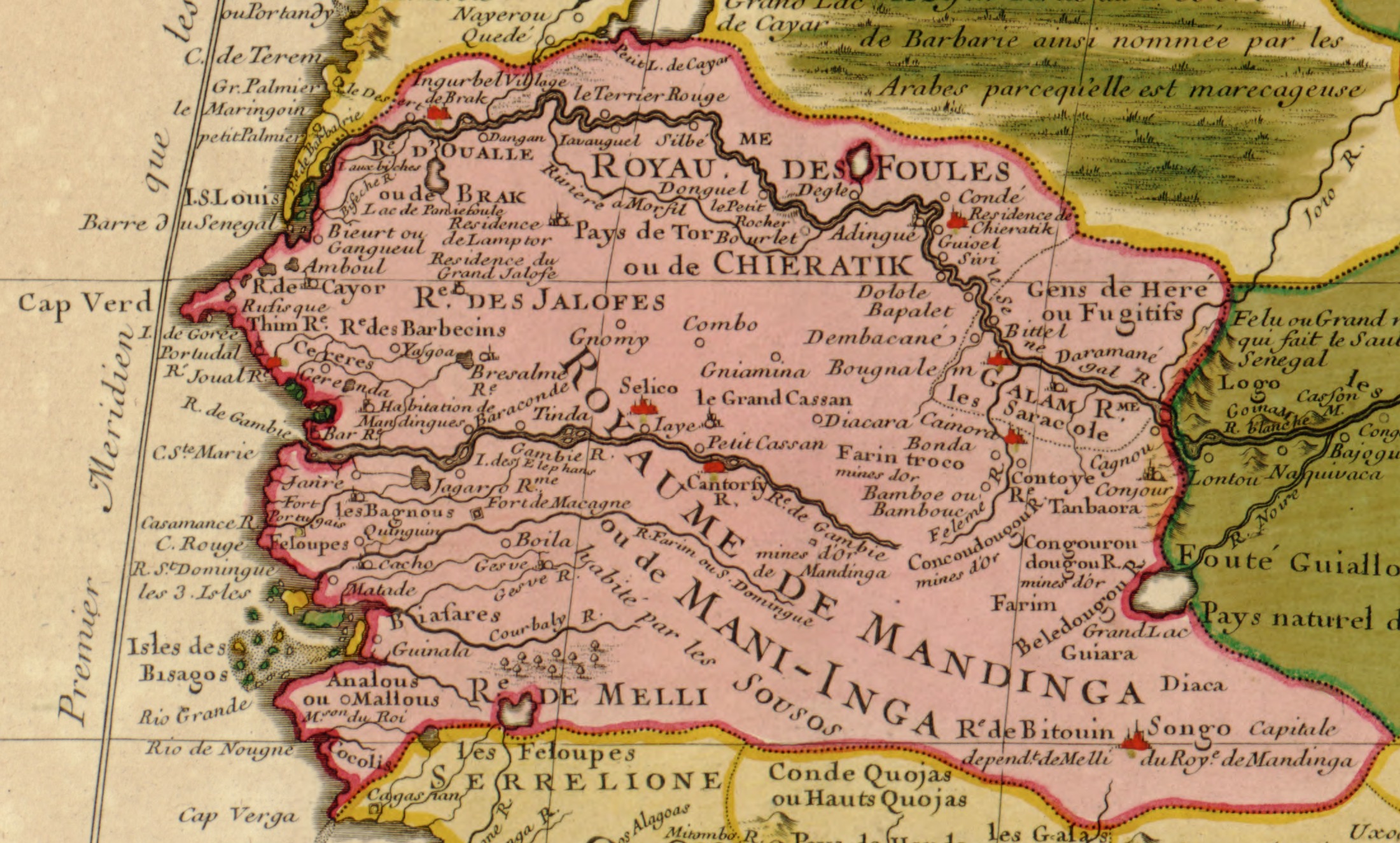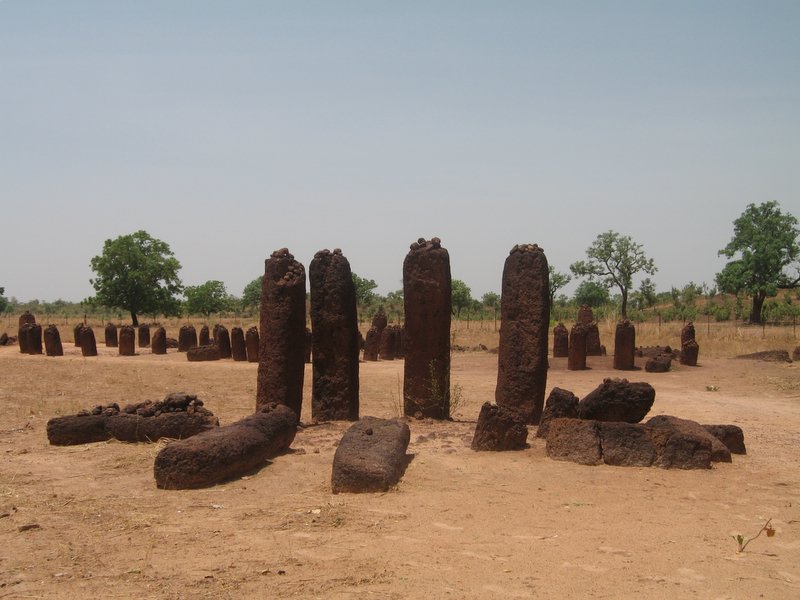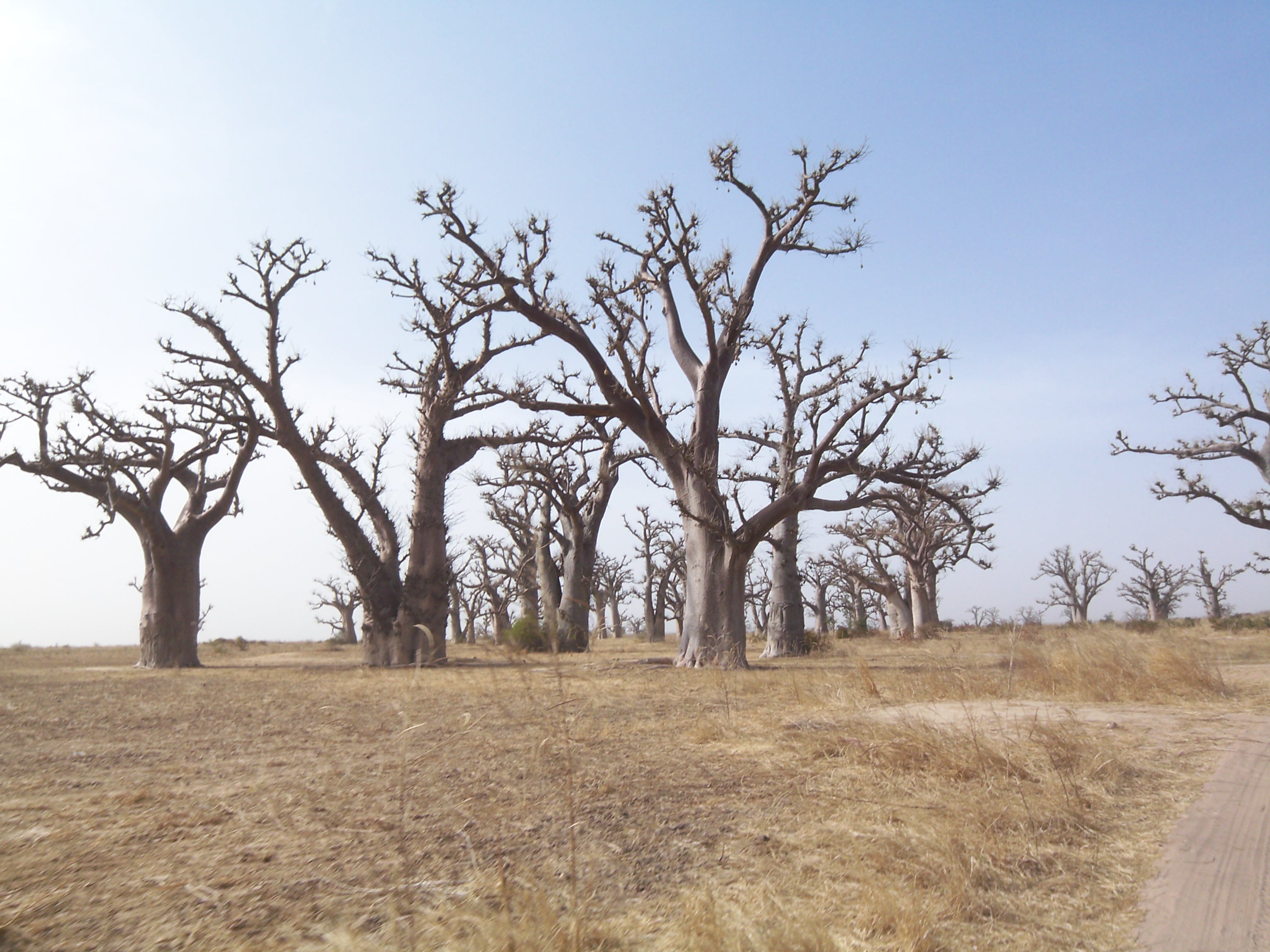|
Senegambia (Dutch West India Company)
Senegambia, also known in Dutch as ''Bovenkust'' ("Upper Coast"), was the collective noun for the fortifications and trading posts owned by the Dutch West India Company (DWIC) in the region now known as Senegal. The main purpose of these trading posts was to obtain slaves in order to ship them to the Americas. The government of the territory was based on Gorée. In 1677, the Dutch lost this island to France. The next year, the French also conquered all DWIC trading posts on the Senegalese coast as well as the island of Arguin. Having lost almost all the trade in gum arabic, bezoar stone, ambergris and ostrich feathers, the DWIC wanted to regain its position. The Frenchman Jean du Casse, head of the ''Compagnie de Sénégal'', reached an agreement with the local leaders, who decided to destroy the Dutch trading posts and the DWIC lost its position for good. Senegambia possessions of the DWIC * Gorée: 1617 to 1663 and 1664 to 1677. ** on Goreé were two fortifications: For ... [...More Info...] [...Related Items...] OR: [Wikipedia] [Google] [Baidu] |
Senegal
Senegal,; Wolof: ''Senegaal''; Pulaar: 𞤅𞤫𞤲𞤫𞤺𞤢𞥄𞤤𞤭 (Senegaali); Arabic: السنغال ''As-Sinighal'') officially the Republic of Senegal,; Wolof: ''Réewum Senegaal''; Pulaar : 𞤈𞤫𞤲𞤣𞤢𞥄𞤲𞤣𞤭 𞤅𞤫𞤲𞤫𞤺𞤢𞥄𞤤𞤭 (Renndaandi Senegaali); Arabic: جمهورية السنغال ''Jumhuriat As-Sinighal'') is a country in West Africa, on the Atlantic Ocean coastline. Senegal is bordered by Mauritania to the north, Mali to the east, Guinea to the southeast and Guinea-Bissau to the southwest. Senegal nearly surrounds the Gambia, a country occupying a narrow sliver of land along the banks of the Gambia River, which separates Senegal's southern region of Casamance from the rest of the country. Senegal also shares a maritime border with Cape Verde. Senegal's economic and political capital is Dakar. Senegal is notably the westernmost country in the mainland of the Old World, or Afro-Eurasia. It owes its name to the ... [...More Info...] [...Related Items...] OR: [Wikipedia] [Google] [Baidu] |
Ostrich
Ostriches are large flightless birds of the genus ''Struthio'' in the order Struthioniformes, part of the infra-class Palaeognathae, a diverse group of flightless birds also known as ratites that includes the emus, rheas, and kiwis. There are two living species of ostrich: the common ostrich, native to large areas of sub-Saharan Africa and the Somali ostrich, native to the Horn of Africa. The common ostrich was also historically native to the Arabian Peninsula, and ostriches were present across Asia as far east as Mongolia during the Late Pleistocene and possibly into the Holocene. They lay the largest eggs of any living land animal. With the ability to run at 70 km/h (43.5 mph), they are the fastest birds on land. They are farmed worldwide, particularly for their feathers as they are used as decoration and feather dusters. Their skin is also used for leather products. They are the heaviest living birds. Taxonomic history The genus ''Struthio'' was first described b ... [...More Info...] [...Related Items...] OR: [Wikipedia] [Google] [Baidu] |
History Of West Africa
The history of West Africa has been divided into its prehistory, the Iron Age in Africa, the major polities flourishing, the colonial period, and finally the post-independence era, in which the current nations were formed. West Africa is west of an imagined north–south axis lying close to 10° east longitude, bordered by the Atlantic Ocean and Sahara Desert. Colonial boundaries are reflected in the modern boundaries between contemporary West African states, cutting across ethnic and cultural lines, often dividing single ethnic groups between two or more states. West African populations were considerably mobile and interacted with one another throughout the population history of West Africa. Acheulean tool-using archaic humans may have dwelled throughout West Africa since at least between 780,000 BP and 126,000 BP (Middle Pleistocene). During the Pleistocene, Middle Stone Age peoples (e.g., Iwo Eleru people, possibly Aterians), who dwelled throughout West Africa between MIS ... [...More Info...] [...Related Items...] OR: [Wikipedia] [Google] [Baidu] |
History Of Senegal
The history of Senegal is commonly divided into a number of periods, encompassing the prehistoric era, the precolonial period, colonialism, and the contemporary era. Paleolithic The earliest evidence of human life is found in the valley of the Falémé in the south-east. The presence of man in the Lower Paleolithic is attested by the discovery of stone tools characteristic of Acheulean such as hand axes reported by Théodore Monod at the tip of Fann in the peninsula of Cap-Vert in 1938, or cleavers found in the south-east. There were also found stones shaped by the Levallois technique, characteristic of the Middle Paleolithic. Mousterian Industry is represented mainly by scrapers found in the peninsula of Cap-Vert, as well in the low and middle valleys of the Senegal and the Falémé. Some pieces are explicitly linked to hunting, like those found in Tiémassass, near M'Bour, a controversial site that some claim belongs to the Upper Paleolithic, while other argue in favor of ... [...More Info...] [...Related Items...] OR: [Wikipedia] [Google] [Baidu] |
Former Dutch Colonies
A former is an object, such as a template, gauge or cutting die, which is used to form something such as a boat's hull. Typically, a former gives shape to a structure that may have complex curvature. A former may become an integral part of the finished structure, as in an aircraft fuselage, or it may be removable, being using in the construction process and then discarded or re-used. Aircraft formers Formers are used in the construction of aircraft fuselage, of which a typical fuselage has a series from the nose to the empennage, typically perpendicular to the longitudinal axis of the aircraft. The primary purpose of formers is to establish the shape of the fuselage and reduce the column length of stringers to prevent instability. Formers are typically attached to longerons, which support the skin of the aircraft. The "former-and-longeron" technique (also called stations and stringers) was adopted from boat construction, and was typical of light aircraft built until the ... [...More Info...] [...Related Items...] OR: [Wikipedia] [Google] [Baidu] |
Former Colonies In Africa
A former is an object, such as a template, gauge or cutting die, which is used to form something such as a boat's hull. Typically, a former gives shape to a structure that may have complex curvature. A former may become an integral part of the finished structure, as in an aircraft fuselage, or it may be removable, being using in the construction process and then discarded or re-used. Aircraft formers Formers are used in the construction of aircraft fuselage, of which a typical fuselage has a series from the nose to the empennage, typically perpendicular to the longitudinal axis of the aircraft. The primary purpose of formers is to establish the shape of the fuselage and reduce the column length of stringers to prevent instability. Formers are typically attached to longerons, which support the skin of the aircraft. The "former-and-longeron" technique (also called stations and stringers) was adopted from boat construction, and was typical of light aircraft built until the ad ... [...More Info...] [...Related Items...] OR: [Wikipedia] [Google] [Baidu] |
Dutch Colonisation In Africa
Dutch commonly refers to: * Something of, from, or related to the Netherlands * Dutch people () * Dutch language () Dutch may also refer to: Places * Dutch, West Virginia, a community in the United States * Pennsylvania Dutch Country People Ethnic groups * Germanic peoples, the original meaning of the term ''Dutch'' in English ** Pennsylvania Dutch, a group of early Germanic immigrants to Pennsylvania *Dutch people, the Germanic group native to the Netherlands Specific people * Dutch (nickname), a list of people * Johnny Dutch (born 1989), American hurdler * Dutch Schultz (1902–1935), American mobster born Arthur Simon Flegenheimer * Dutch Mantel, ring name of American retired professional wrestler Wayne Maurice Keown (born 1949) * Dutch Savage, ring name of professional wrestler and promoter Frank Stewart (1935–2013) Arts, entertainment, and media Fictional characters * Dutch (''Black Lagoon''), an African-American character from the Japanese manga and anime ''Black L ... [...More Info...] [...Related Items...] OR: [Wikipedia] [Google] [Baidu] |
Senegambia
The Senegambia (other names: Senegambia region or Senegambian zone,Barry, Boubacar, ''Senegambia and the Atlantic Slave Trade'', (Editors: David Anderson, Carolyn Brown; trans. Ayi Kwei Armah; contributors: David Anderson, American Council of Learned Societies, Carolyn Brown, University of Michigan. Digital Library Production Service, Christopher Clapham, Michael Gomez, Patrick Manning, David Robinson, Leonardo A. Villalon), Cambridge University Press (1998) p. 5,(Retrieved 15 March 2019) Senegaámbi in Wolof language, Wolof) is, in the narrow sense, a historical name for a geographical region in West Africa, which lies between the Senegal River in the north and the Gambia River in the south. However, there are also text sources which state that Senegambia is understood in a broader sense and equated with the term the Western region. This refers to the coastal areas between Senegal and Sierra Leone, where the inland border in the east was not further defined. Geographically, t ... [...More Info...] [...Related Items...] OR: [Wikipedia] [Google] [Baidu] |
Joal
Joal-Fadiouth is a town and commune in the Thiès Region at the end of the Petite Côte of Senegal, south-east of Dakar. ''Joal'' lies on the mainland, while ''Fadiouth'', linked by a bridge, lies on an island of clam shells, which are also used in local architecture and crafts. The village has no motorised transport evidenced by the sign on entering. It has large Christian and Muslim populations with cemeteries on another shell island. Another attraction is granaries on stilts in the water. The population of the commune in 2013 was some 46,000. History While the origin of the village remains disputed, the establishment of the Serer in the area is assumed to have begun when the advance of the Almoravids in the 11th century forced them to leave the Sénégal River valley, occupying the Petite Côte and the region of the Sine River. Another theory claims that Joal and Fadiouth have been founded by the Guelowar when they were expelled from the kingdom of Kaabu. Both of these t ... [...More Info...] [...Related Items...] OR: [Wikipedia] [Google] [Baidu] |
Rufisque
Rufisque ( ar, روفيسك; Wolof: Tëngeéj) is a city in the Dakar region of western Senegal, at the base of the Cap-Vert Peninsula. It has a population of 179,797 (2002 census). In the past it was an important port city in its own right, but is now a suburb of Dakar. Rufisque is also the capital of the department of the same name and lies east of Dakar, the capital of Senegal. History Originally a Lebou fishing village called Tenguedj ( wo, Tëngéej), Rufisque became important in the 16th century as the principal port of the kingdom of Cayor, being frequented by Portuguese (who named it ''Rio Fresco'', in which the name of the city originated from, meaning in English:"Freshwater River"), Dutch, French and English traders. A Euro-African Creole, or Métis, community of merchants grew up there, in close contact with similar communities in Saint Louis, Gorée and other places along the Petite Côte (Portudal, Joal) south to the Gambia River. In 1840 a couple of Sain ... [...More Info...] [...Related Items...] OR: [Wikipedia] [Google] [Baidu] |
Ivory
Ivory is a hard, white material from the tusks (traditionally from elephants) and teeth of animals, that consists mainly of dentine, one of the physical structures of teeth and tusks. The chemical structure of the teeth and tusks of mammals is the same, regardless of the species of origin, but ivory contains structures of mineralised collagen. The trade in certain teeth and tusks other than elephant is well established and widespread; therefore, "ivory" can correctly be used to describe any mammalian teeth or tusks of commercial interest which are large enough to be carved or scrimshawed. Besides natural ivory, ivory can also be produced synthetically, hence (unlike natural ivory) not requiring the retrieval of the material from animals. Tagua nuts can also be carved like ivory. The trade of finished goods of ivory products has its origins in the Indus Valley. Ivory is a main product that is seen in abundance and was used for trading in Harappan civilization. Finished ivory pr ... [...More Info...] [...Related Items...] OR: [Wikipedia] [Google] [Baidu] |
Saly
Saly (also called Sali or Saly Portudal) is a seaside resort area in Thiès Region on the Petite Côte of Senegal, south of Dakar. It is the top tourist destination in all of West Africa and has the status of a commune. History Saly was originally a Portuguese trading post known as ''Porto de Ale'', which became ''Portudal'', and later ''Sali Portudal''. On February 24, 1984, the resort was created on a previously unoccupied tract of land near the former trading post. It was about this time that tourism began to take off in Senegal. Administration Saly is part of M'bour, Thiès. Flora The resort is located on a sandy beach lined with coconut palm trees. Population The population is difficult to quantify because of the constant stream of tourists in and out of the area as well as the number of temporary residents. It has been suggested that an average of 20,000 people live in the area at any given time. The resident population was counted at 29,945 in the 2013 census. Econ ... [...More Info...] [...Related Items...] OR: [Wikipedia] [Google] [Baidu] |







